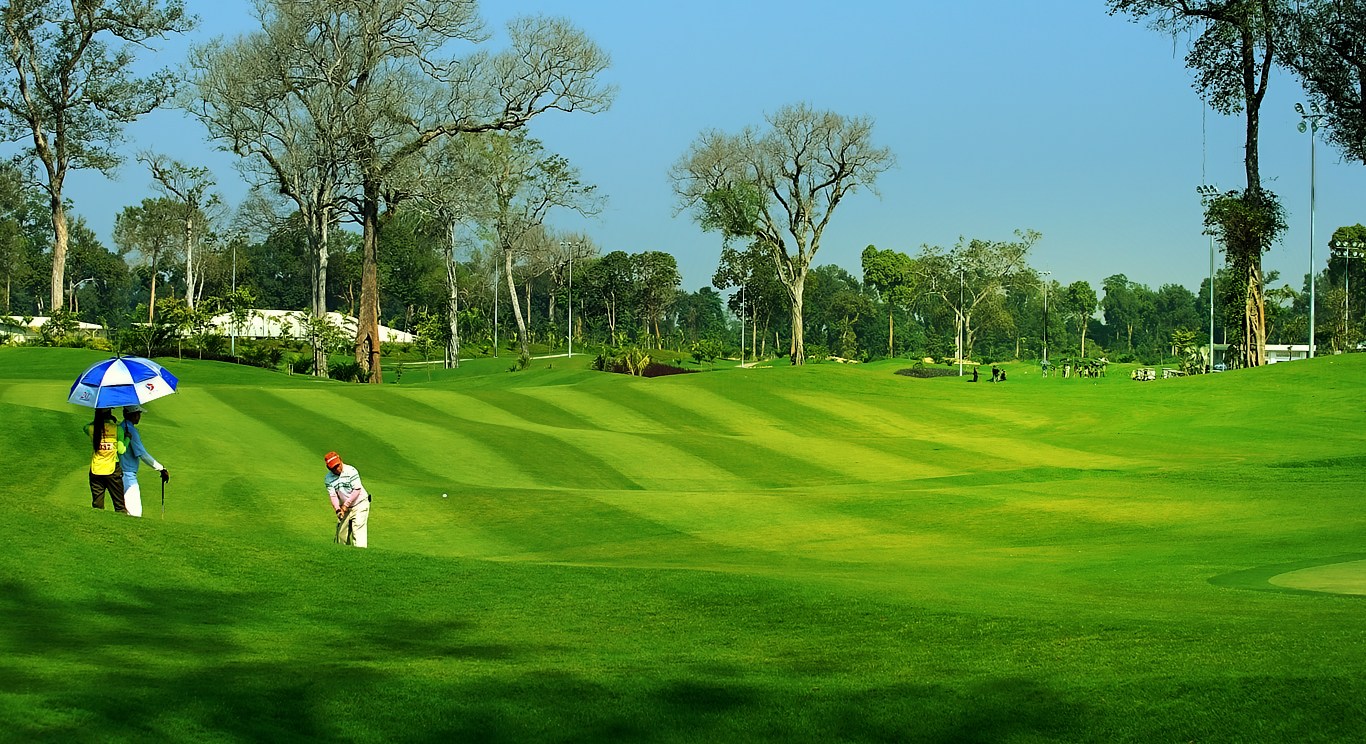How Vietnam can become a new frontier for golf and the opportunities and challenges that exist in promoting the country’s golf tourism to its full potential.

Golf records
Recently, Forbes’ veteran journalist Erik Matuszewski, who has over 20 years of experience in the field of sports, evaluated Vietnam as the having the world’s fastest-growing golf market amongst 209 golf-destination countries around the globe. CEO of Asia Pacific Golf Group Mike Sebastian also stated that Vietnam’s golf market is fast and synchronously developing in a way seen in very few places around the world.
Along with that, with Greg Norman, a man with a strong desire to strengthen the position of Vietnam on the world’s golf map, becoming Vietnam’s Tourism Ambassador for the 2018-2021 tenure, while also accompanying the Vietnam Golf Tourism Association (newly launched this March) as its senior consultant, Vietnam’s golf tourism is seeing a rosy path to becoming one of the world’s top destinations for global golfers.
Currently, around 170 golf travel companies from 40 member countries of IAGTO are exploring the Asian market with a view to expanding their business in Vietnam.
Though favoured by nature with ideal topography and weather conditions, Vietnam’s golf tourism is still at the very early stages of development but has already seen laudable achievements and attracts a large number of high-income golfers to Vietnam, who come not just to play golf but also to experience the endless charms of the Vietnamese landscape and culture. Although not comparable to other tigers of the golf industry in Asia and the world such as Thailand, Japan, Korea, Singapore or the US, the rapid and comprehensive development of Vietnam’s golf tourism is undeniable and the country will undoubtedly become a golf paradise in the near future.
Central Vietnam in general and particularly Danang are the top destinations for golfers. In 2016, profit from golf tourism in the region contributed $68 million to the tourism industry, and it is expected that by 2019, Danang alone will post a yearly revenue of $40 million from golf. Recognizing the potential of golf tourism, seven signature designed golf courses in Central Vietnam joined hands to form a new golf-specific destination marketing group aiming to promote Vietnam’s Central Coast as a world-class destination for golf and culture – Vietnam Golf Coast. The group’s president is Ben Styles, who boasts an impressive career spanning all facets of the golf industry.
In 2017, Vietnam was honored to host the 6th annual IAGTO (International Association of Golf Tour Operators) Asia Golf Tourism Convention in Danang. That year’s AGTC was Asia’s largest-ever golf tourism event, with CEO of IAGTO Peter Walton announcing that Danang has broken all records in advance by attracting the attendance of the largest number of golf tour operators, saying that “This clearly shows the appeal of Danang as one of Asia’s newest and most exciting golf destinations.”
Golf tourism blooms
The pioneers of golf in Vietnam, who are also Vietnamese real estate giants, namely BRG Group, Vingroup, FLC Group, and Flamingo Group, among others, have significantly contributed to the innovation of golf tourism and helped bring Vietnam’s golf to a new height. Besides traditional golf courses in hilly and mountainous area mainly for local players, world-class courses, such as “Best Tourism Attractiveness Course 2017” BRG Danang Golf Resort, BRG Ruby Tree Golf Resort in Haiphong, FLC Quy Nhon Golf Links, FLC Halong Bay Golf Club overlooking the UNESCO World Heritage Site, and Vinpearl Golf Club Phu Quoc, have been built in famous tourist locations, attracting more and more international tourists to Vietnam for a combined journey of exploring the country while experiencing a new golf destination.

Not limited to the key domestic investors, Vietnam’s golf market has attracted many foreign investors to build state-of-the-art golf courses across this S-shaped strip of land. 120 kilometers from Ho Chi Minh City is Golf Digest’s 35th out of 100 best golf courses in the world – The Bluffs Ho Tram Strip in Ba Ria – Vung Tau province, invested by the Canadian group Asian Coast Development Ltd.
The Bluffs designer and golf legend Greg Norman said, “Playing true links golf among the dunes of southern Vietnam with dramatic ocean views during your round makes The Bluffs Ho Tram Strip one of the most unique experiences in the world.”
With golf courses designed by world-renowned designers on primary terrains and comprehensively invested, golf tourism in Vietnam, though still fresh in the market, is already impressing global golfers and is widely appreciated as having received a number of Asian and global awards, most notably Bana Hill Golf Club for 2018 Asia’s Best Course and The Grand Ho Tram Strip for 2018 Asia’s Best Golf Hotel. These two destinations have awarded golf accolades for many years, and Vietnam has proudly been named as Asia’s Best Golf Destination for the two consecutive years of 2017 and 2018.
First introduced to Vietnam in 1920 with the first and only 9-hole Dalat Palace Golf Club built by King Bao Dai, the sport for a long time was considered luxurious and exclusively for aristocrats. Golf tourism in Vietnam didn’t take off until the initial “planning of golf course constructions in Vietnam by 2020” was approved in 2009, with a total of 89 courses on a land area of 9985 hectares. After adjustments, the plan was expanded to include 96 golf courses built on 10980 hectares of land.
As in 2015, golfers could only experience playing this sport on some 30 golf courses across the country. In 2017, over 50 golf courses were completed to serve players but by the beginning of 2019, Vietnam had opened 78 golf courses, with 43 other projects in different stages of development.
Though possessing ideal conditions, golf tourism in Vietnam has yet to be fully harnessed. Currently, golf tourists, who are mostly entrepreneurs tending to have long stays with a high expenditure of up to $400 a day, account for merely 0.5 percent of total international arrivals in Vietnam, compared to 2 percent in Malaysia and 9 percent in Thailand.
[content_block id=4039 slug=posts-footer]





